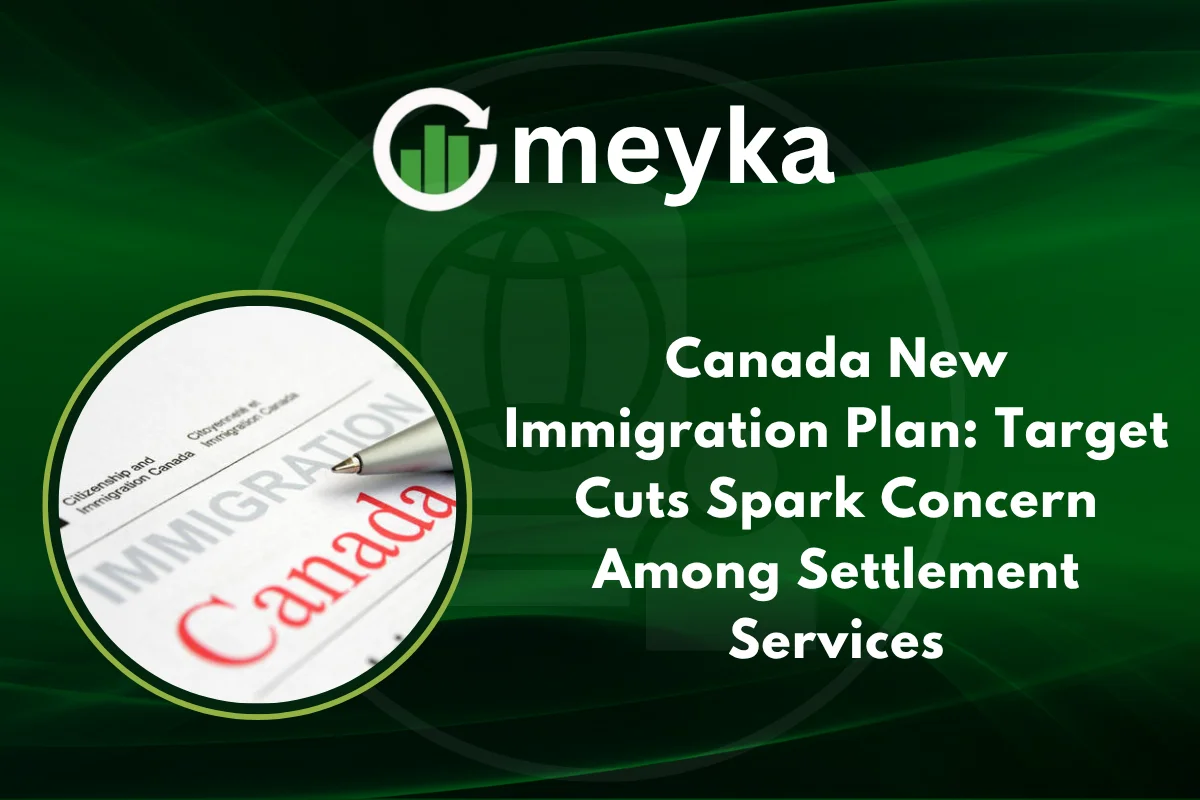Canada New Immigration Plan: Target Cuts Spark Concern Among Settlement Services
We are closely watching Canada new immigration plan that the federal government recently unveiled. This plan marks a significant shift in how Canada will manage both permanent and temporary immigration. To align immigration with capacity, service delivery and economic needs, the changes carry big implications for settlement services, newcomers, and Canada’s labour market.
Understanding the Plan
The government, through Immigration, Refugees and Citizenship Canada (IRCC), released its public engagement summary for its 2026–2028 immigration levels. In essence, the plan proposes to stabilize or slightly reduce permanent resident admissions to approximately 380,000 per year, and to make sharper reductions in temporary resident targets (including work-permit holders and international students).
Importantly, the government also flags an increase in the share of economic immigration (skilled workers, etc.) to about 64% of new permanent residents.
Key Components of the Canada New Immigration Plan
Under the plan:
- The target for new permanent residents is set at 380,000 annually for 2026–2028.
- Temporary resident admissions (workers + students) are set to drop from around 673,650 in 2025 to 385,000 in 2026, then ~370,000 in 2027 and 2028.
- The share of economic stream admissions rises, while family-class and refugee/humanitarian streams face relative reductions.
- These changes aim to reduce the temporary-resident population to less than 5% of Canada’s total population by the end of 2027.
Why the Government is Taking This Direction
Several motivations underpin the plan. First, concerns about infrastructure stress: housing, schools, healthcare and other public services are under pressure with the rapid growth of newcomers and temporary residents. Second, labour market alignment: Canada’s economy needs people with particular skills and the government aims to align immigration with skill shortages. Third, public confidence: there are rising concerns among some Canadians that immigration numbers have grown too quickly for systems to handle, and the government is signalling more control.
Why Settlement Services Are Raising Concerns
While the plan emphasises economic immigration, organisations that provide settlement services are sounding alarms. The cuts to certain streams, particularly temporary residents and refugees, raise worries that the support infrastructure will become overstretched or mismatched.
For example, the Canadian Council for Refugees (CCR) warns that cuts to refugee quotas (from 23,000 privately-sponsored in 2025 to 16,000 in 2026) undermine the humanitarian role of Canada. They also note that shrinking eligibility for settlement services for economic immigrants may hamper newcomers’ successful integration. The result could be increased pressure on settlement agencies, longer wait times for clients, and a greater risk of poorer outcomes for newcomers.
Impact on Stakeholder Groups
- Newcomers and temporary residents: Those hoping to move to Canada may face longer waits, stricter criteria or fewer places. The reduction in temporary admissions may limit some study or work-permit pathways.
- Settlement service providers: Agencies will need to adapt to a shift in the mix of newcomers (more economic class, fewer temporary or humanitarian entrants). Integration programming may need restructuring.
- Employers: Businesses that rely on workers from temporary or international student streams may face greater competition or fewer available candidates. On the flip side, the focus on economic immigration may benefit sectors needing skilled talent.
- Communities and municipalities: The plan may ease some pressure on housing and local services, but slower arrival numbers could delay community growth or demographic renewal in underpopulated regions.
What Went Right and What Went Wrong?
What went right:
The Canada new immigration plan sets clear targets, provides predictability and aligns immigration more directly with economic needs and service capacity. It offers stronger signals to provinces, employers and newcomers about the direction of policy.
What went wrong or comes with risk:
The cuts may not fully align with sectoral labour needs in the short term. Settlement service infrastructure may not adapt quickly to the changed mix of newcomers and could face funding shortfalls. Also, the humanitarian and family-class reductions may reduce Canada’s traditional role as a welcome society.
Product Availability Analogy (for Immigration Services)
Just as when companies launch a product and ensure availability, immigration systems must ensure “services available” for newcomers. In this case:
| Service Area | Current Status | Risks |
| Settlement language programs | Available via government funding | If arrivals shift, the backlog may grow |
| Credential recognition for newcomers | Funded; new action fund announced | If arrivals shift, backlog may grow |
| Housing support for newcomers | Local initiatives exist | Fewer newcomers might ease pressure, but slower arrivals can delay housing-market adjustments |
Post-Plan Update: What We Are Watching
We will monitor how the implementation unfolds under Canada new immigration plan. Key metrics include processing times for permanent resident applications, the actual arrivals of temporary residents compared to targets, funding and staffing levels in settlement services, and the regional distribution of newcomers.
The government must deliver on its promise of “a well-managed and sustainable immigration system”. A further signal to watch is how the provinces respond, since they play a key role in settlement and labour integration.
Conclusion
The Canada new immigration plan represents a strategic shift in Canadian immigration policy. The emphasis on economic immigration and the reduction in temporary-resident volumes reflect a new phase of managed growth. For newcomers and service providers alike, there are both opportunities and challenges ahead. The success of the plan will hinge on effective integration, adequate service infrastructure and alignment with labour-market needs.
If Canada can stay the course, the plan may strengthen social cohesion, improve settlement outcomes and ensure immigration remains a driver of economic growth without overwhelming public systems.
FAQs
Under the 2026 – 2028 plan, Canada aims to admit about 380,000 permanent residents annually.
The government says it needs to reduce pressure on housing, social services, and infrastructure, and to bring the temporary resident share to less than 5% of the population by the end of 2027.
Settlement agencies warn that the shift in immigration mix may reduce funding for broad-based newcomer services and increase strain on programs tailored to economic immigrants.
Disclaimer:
The content shared by Meyka AI PTY LTD is solely for research and informational purposes. Meyka is not a financial advisory service, and the information provided should not be considered investment or trading advice






